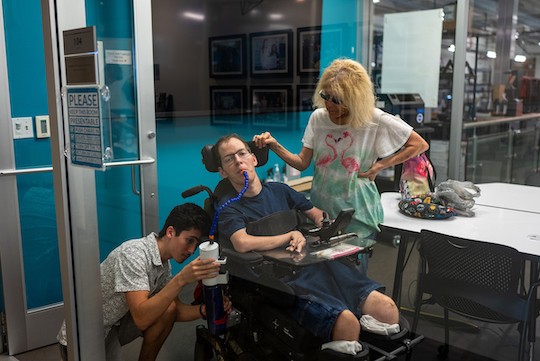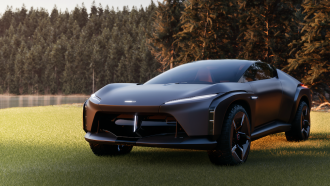Rice University's Oshman Engineering Design Kitchen (OEDK) has unveiled a new assistive-drinking device named RoboCup. This innovation aims to address the challenges faced by individuals with limited mobility, such as those with cerebral palsy.
The project was initiated in response to a request from Gary Lynn, a Houston resident with cerebral palsy, who sought a solution for independent hydration.

Living with cerebral palsy, Houstonian Gary Lynn approached Rice University’s Oshman Engineering Design Kitchen (OEDK) to turn his vision of an assistive-drinking device into reality.
How RoboCup Came to Be
Thomas Kutcher and Rafe Neathery, undergraduate engineering students at Rice, took on the task of developing RoboCup. The device is designed to enable wheelchair users who struggle with holding a cup to drink water independently.
By mounting RoboCup onto wheelchairs, users can customize it to their specific mobility needs. The device operates on battery power and can be activated through a proximity sensor or a button, providing flexibility for different user preferences.
To ensure the accessibility of RoboCup, both Kutcher and Neathery have made the instructions available for free on the team's OEDK website, allowing anyone with a 3D printer to assemble their own device.
The duo carefully considered issues of intellectual property and accessibility, ultimately opting to provide open access to their creation. In response to feedback from professionals working with individuals facing similar mobility challenges, the team expanded the options for building the device.
That included incorporating different types of sensors, valves, and mechanisms for mounting on various wheelchair models. The goal was to make RoboCup as versatile and accessible as possible.
Read Also: Disney Unveils New Robot Capable of Displaying Realistic Emotional Expressions at IROS 2023
Collaborating With Gary Lynn
The students collaborated closely with Gary Lynn throughout the development process, resulting in several design iterations. The final version features a mounted cup-and-straw configuration, chosen for its improved aesthetics and reduced interference with mobility.
Maria Oden, the team's mentor and a professor of bioengineering, praised the persistence of the students and Gary in refining the design. She noted their dedication to incorporating feedback and ensuring the device's accessibility to a wide user base.
Gary and his mother, Andrea Lynn, expressed their hope that RoboCup will shed light on the challenges faced by individuals with disabilities, particularly in performing seemingly simple tasks like drinking water. For Gary, the device represents a significant step toward greater independence and confidence.
"It was a challenge walking that thin line between simplifying the device and sacrificing functionality or robustness," Neathery said in a press statement.
"We wanted to keep it working well while still making it simpler and cheaper. Balancing all these considerations was really tricky, but we did get to a point where it's now a lot easier to 3D print and assemble the device using simple, readily accessible tools," he added.
Related Article: Google Maps Now Shows Which Locations Are Accessible By Wheelchair: Feature Is Still Incomplete, But Very Much Welcome









